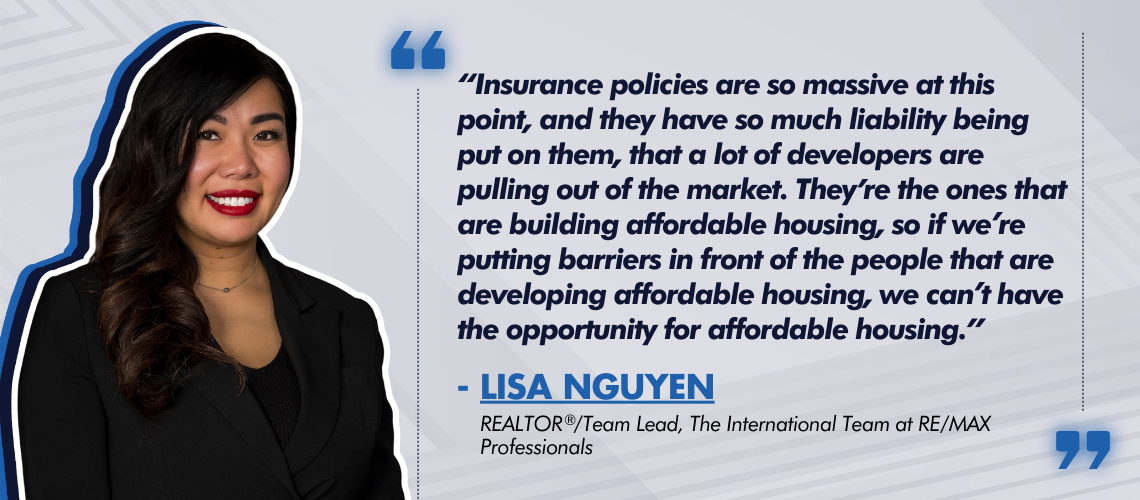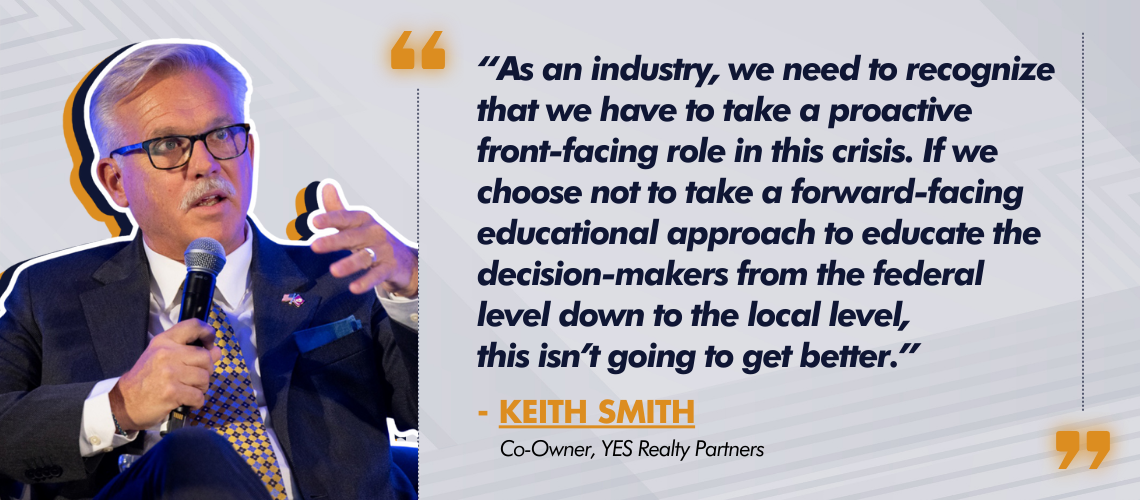While housing (un)affordability manifests in several price tags—taxes, insurance, maintenance—the root of the issue is generally cited as supply. Right now, most projections show there is a lack of it, which means demand is pushing up prices.
Keith Smith, owner of Virginia-based YES Realty Partners, says that zoning supersedes all other affordability concerns. It is governance over how you can add that supply, and where, and in what unit shape or size.
“I’m a recovering developer and builder. I’ve built 600 houses in my career, so I approach things from that perspective,” Smith explains, also citing his current work as chair of the Piedmont Community Land Trust and a treasurer of the Thomas Jefferson Planning District Commission, a regional planning commission for Virginia.
In a white paper about housing affordability, Smith wrote that “restrictive zoning” limits supply and thus creates more unaffordability.
“Many communities limit development to large, single-family homes, reducing opportunities for diverse housing. Allowing townhomes, duplexes and smaller homes would help meet demand,” Smith wrote.
Some states and localities have been making zoning adjustments to boost supply. In Smith’s own backyard, he notes recent “aggressive” zoning reform passed in Charlottesville, Virginia, in 2024 that included reforms to the permit process and duplexes of up to eight units.
Massachusetts also passed a 2024 housing reform act that permits accessory dwelling units (ADUs) to be constructed in single-family zones. Colorado is also pushing such accessory units, according to Nguyen.
“Another thing we’ve worked on in Colorado is getting approval for…accessory dwelling unit zoning. That has helped to be able to build additional structures in already established neighborhoods, and also writing bills that are giving the funding,” she says.
But permission to build in zones is only part of it. Another prong is making it not only legally permitted, but easier for the people who build such diverse housing units to do so.
Smith cites a statistic—backed up by findings from the National Association of Home Builders (NAHB)—that 25% of costs on new construction come from regulatory expenses.
“So on a $400,000 home, $100,000 of that is purely attributed to regulatory expenses,” says Smith, who notes that saving builders time (with faster permit approvals) and cost on regulations will cut into current high pricing levels.
“We need to look at this as an industry,” says Smith, who goes on to explain that cutting regulations down from one-fourth could mean the difference between a $350,000 listing and a $400,000 listing.
When asked about affordability issues in Colorado, Nguyen notes that developers and builders—not just homeowners—are also facing financial burdens of high insurance premiums.
“Insurance policies are so massive at this point, and they have so much liability being put on them, that a lot of developers are pulling out of the market,” she says. “They’re the ones that are building affordable housing, so if we’re putting barriers in front of the people that are developing affordable housing, we can’t have the opportunity for affordable housing.”

On both regulatory and zoning reform, Smith believes that real estate agents and the collective real estate industry should become advocates. Less regulation for builders and diverse housing units for consumers are in the industry’s best interest, he argues.
“That’s where I think our industry needs to put its big-person pants on and support (these reforms). As an industry, and as real estate professionals, we tend to stay away from that,” says Smith, even if he admits the conversation around these reforms and advocating for them will not be easy.
“As an industry, we need to recognize that we have to take a proactive front-facing role in this crisis because the reality is it will affect our pocketbooks,” Smith continues. “If I don’t have stuff to sell, which means I can’t help buyers and sellers consummate deals, I don’t get paid, so we have a direct, vested interest in pushing this forward. And what has to happen, in my opinion, is we as CEOs, we as brokerage owners, we as individual agents have to get involved. If we choose not to take a forward-facing educational approach to educate the decision-makers from the federal level down to the local level, this isn’t going to get better.”
Part of Smith’s proposal for positioning real estate professionals as affordability advocates is speaking to policymakers as well as the public those policymakers serve. Passing policies to increase housing supply will take the will of both.
“The political reality of it is these are local decisions…local governments, local jurisdictions have the most direct impact on housing affordability. They have to make the politically hard decisions because you and I are going, ‘Hey, I’m good with more housing,’ but maybe somebody who’s got gray hair like me is saying, ‘No, I don’t want any more housing around.’ I think we have a generational problem more than a fiscal problem,” says Smith, who also describes housing and zoning reform as “political hot potatoes,” hence the importance of convincing communities of the benefits.

Smith’s advice, outlined in his white paper, for REALTORS® looking to become advocates is to “attend zoning meetings, join industry panels and actively participate in housing discussions.”
If/when diverse and affordable housing is built, it’s also important to make the area somewhere your buyer clients want to live. Nguyen points out that Colorado’s push for affordable housing have also focused on transit-oriented development.
“In Colorado, the affordable housing developers have identified another issue in that if you build affordable housing, but it’s not close to transportation, the people moving into the affordable housing can’t afford to get to work,” she explains.
How many units, transit-oriented or otherwise, are needed to fill the gap and bring prices down?
“We’re starting to get enough units, but we have anywhere between 2 or 3 million units short to as much as 8 million short. This is simple supply and demand,” says Smith. “And if we can get back to 6- or 12-month project approvals, not eight years, then moving forward, prices will stabilize. Hopefully interest rates start coming down and we start getting to where we would need to be if we can’t tackle the zoning and tackle the regulatory requirements.”



